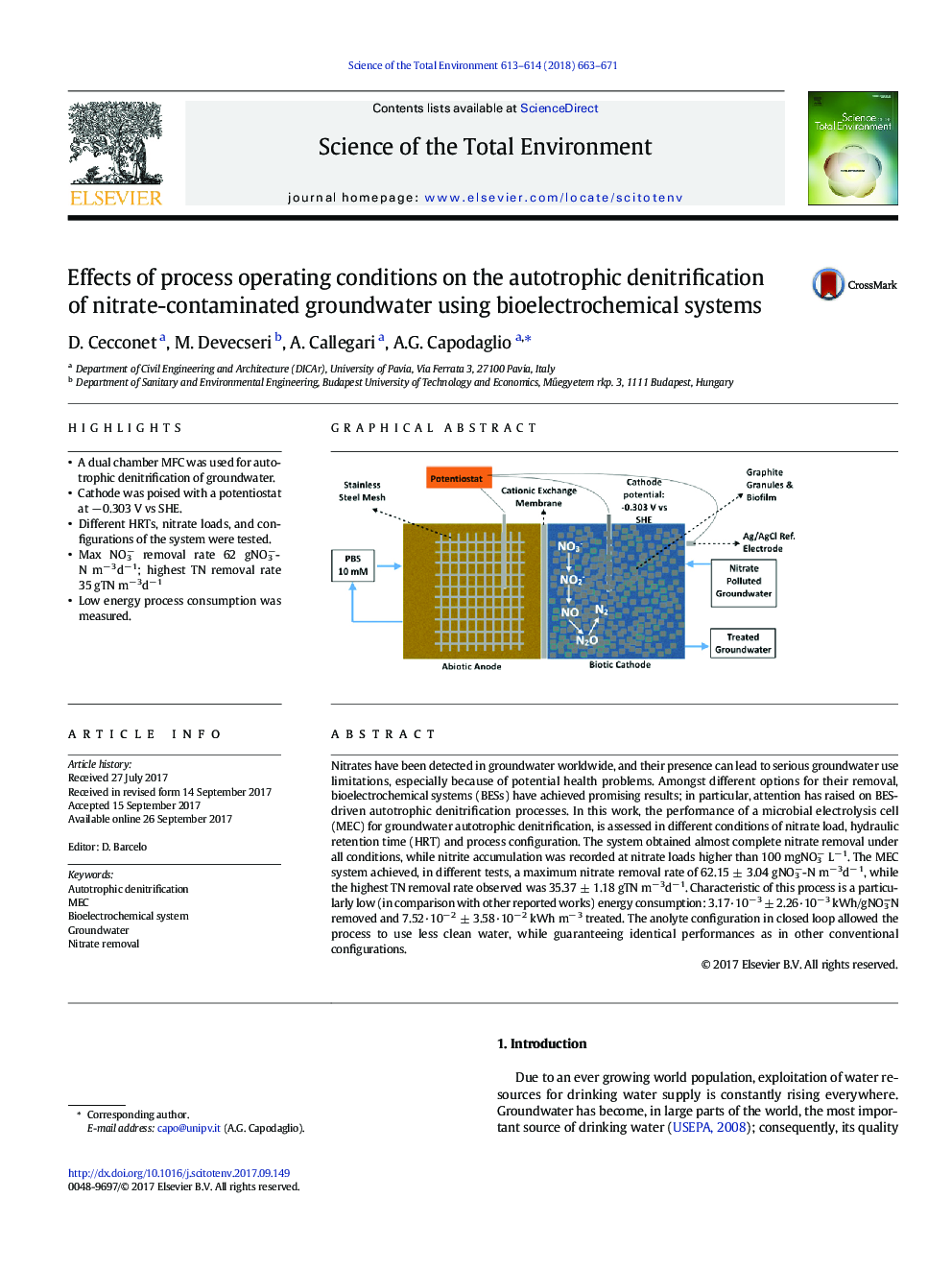| Article ID | Journal | Published Year | Pages | File Type |
|---|---|---|---|---|
| 5750128 | Science of The Total Environment | 2018 | 9 Pages |
â¢A dual chamber MFC was used for autotrophic denitrification of groundwater.â¢Cathode was poised with a potentiostat at â 0.303 V vs SHE.â¢Different HRTs, nitrate loads, and configurations of the system were tested.â¢Max NO3â removal rate 62 gNO3â-N mâ 3dâ 1; highest TN removal rate 35 gTN mâ 3dâ 1â¢Low energy process consumption was measured.
Nitrates have been detected in groundwater worldwide, and their presence can lead to serious groundwater use limitations, especially because of potential health problems. Amongst different options for their removal, bioelectrochemical systems (BESs) have achieved promising results; in particular, attention has raised on BES-driven autotrophic denitrification processes. In this work, the performance of a microbial electrolysis cell (MEC) for groundwater autotrophic denitrification, is assessed in different conditions of nitrate load, hydraulic retention time (HRT) and process configuration. The system obtained almost complete nitrate removal under all conditions, while nitrite accumulation was recorded at nitrate loads higher than 100 mgNO3â Lâ 1. The MEC system achieved, in different tests, a maximum nitrate removal rate of 62.15 ± 3.04 gNO3â-N mâ 3dâ 1, while the highest TN removal rate observed was 35.37 ± 1.18 gTN mâ 3dâ 1. Characteristic of this process is a particularly low (in comparison with other reported works) energy consumption: 3.17·10â 3 ± 2.26·10â 3 kWh/gNO3-N removed and 7.52·10â 2 ± 3.58·10â 2 kWh mâ 3 treated. The anolyte configuration in closed loop allowed the process to use less clean water, while guaranteeing identical performances as in other conventional configurations.
Graphical abstractDownload high-res image (285KB)Download full-size image
